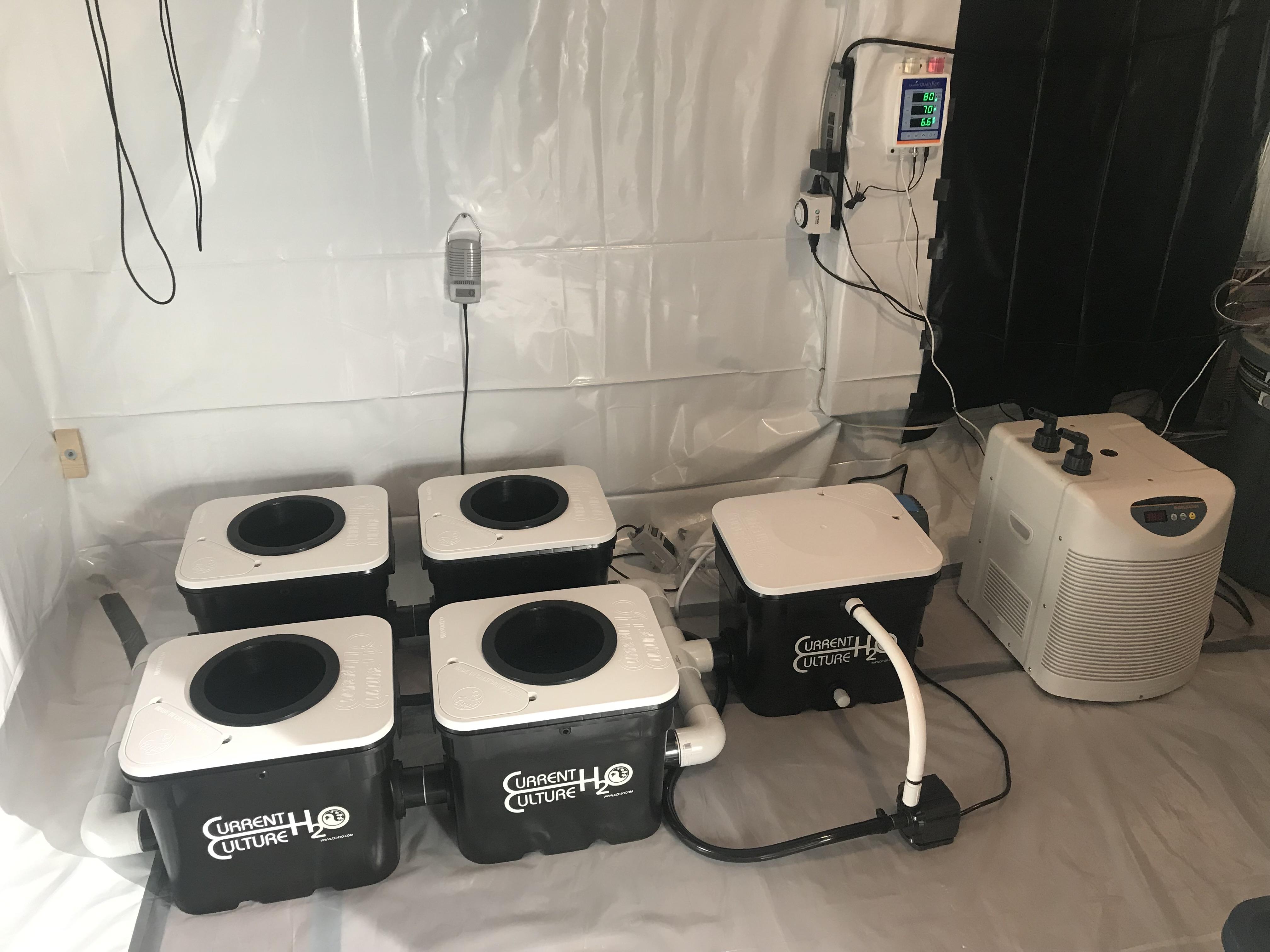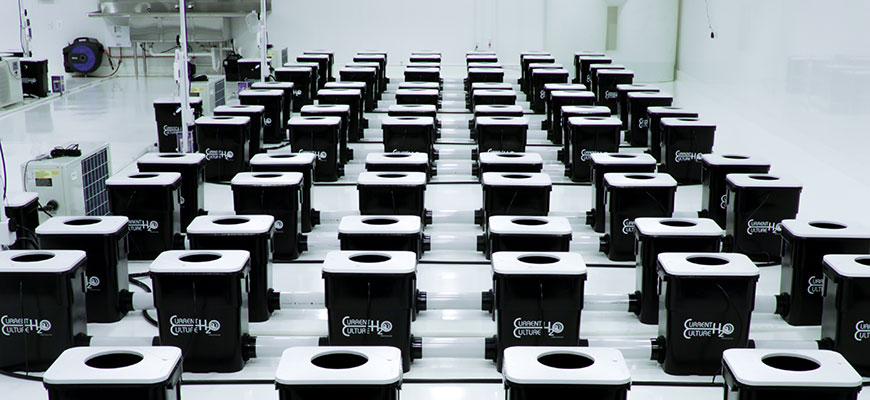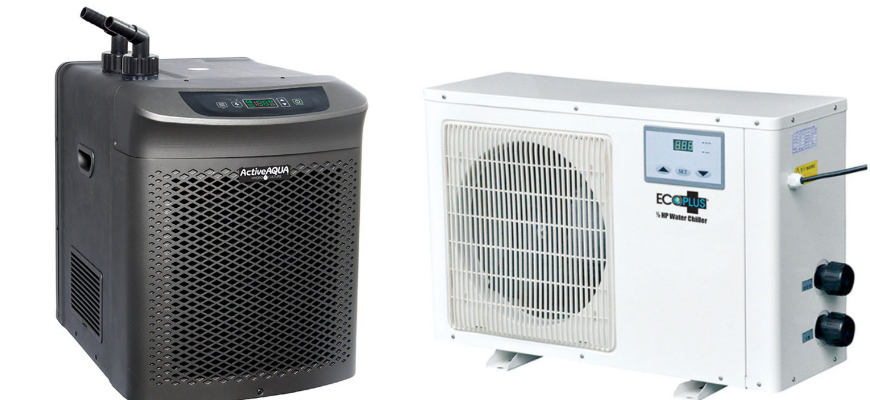How To Install A Water Chiller To A Hydroponics System
Installing a water chiller to your hydroponics system is a crucial step in maintaining optimal water temperature and ensuring the health and productivity of your plants. A water chiller helps to regulate and cool the water, preventing overheating and creating an ideal environment for plant growth.
Understanding Hydroponic Water Chillers
For any hydroponic growing system, a water chiller is a necessity. Without it, the water can quickly get too warm, resulting in a wide range of issues such as nutrients losing their efficacy and root systems experiencing damage from excessive heat.
Fortunately, understanding hydroponic water chillers is not difficult when you know what to look for. Depending on your setup size, they come in different sizes ranging from small portable chillers to large 5-ton commercial models.
At its core, a hydroponic water chiller works by cooling down the starting temperature of the water that's used to pump nutrient rich solutions into your plants roots. Many systems will usually contain some kind of pump that circulates the water through the chiller before sending it back out into your growing environment.
This cools down the temperature of the water and maintains correct levels to ensure that your plants get all the necessary nutrients without being subjected to overly warm temperatures that can damage their delicate roots or causes nutrient problems like nutrient lockout.
Do You Need a Water Chiller for Hydroponics?
The concept of hydroponics is an incredibly innovative way to grow plants. It works by suspending the roots of a plant in a nutrient-rich water solution, which provides nutrition for the plant instead of planting it in soil.
Although technically you don’t need to use a water chiller for your hydroponic system, there are some benefits to using one if yours is prone to experiencing higher water temperatures.
If left unchecked, high temperatures can become a detriment to your plants’ growth due to nutrient depletion in the water and loss of oxygen when there is warming.
By connecting a water chiller directly into your reservoir, you can maintain an optimal temperature range and provide ideal conditions for your plants throughout their growth cycles.
Water chillers are also beneficial if multiple reservoirs are used in one set up. This way, all the nutrition, pH balance, and oxygen levels stay consistent across all reservoirs so that they working together synergistically creates an even better environment for plants to flourish using hydroponics.
What Size Water Chiller Do I Need for Hydroponics?
When it comes to hydroponics, choosing the correct size water chiller is incredibly important. For most residential hydroponics projects, a 10-gallon to 100-gallon reservoir is generally recommended, although larger water chillers are available for commercial operations.
Plus, many manufacturers will explicitly list their recommended reservoir size in order to make your purchasing decision easier. But that doesn’t mean you should purchase a huge chiller just in case—having a chiller that’s too large could end up raising your electric bill while also resulting in excess cooling of your nutrient solution and stunting growth as a result.
How Do Water Chillers Work?
Water chillers are a great addition to any hydroponic system. They allow for a cooling of water in the reservoir and provide cooling to nutrient-rich solutions which helps grow healthier plants. The process is relatively simple and effective.
When water passes through the chiller's coils, they are submerged in water, allowing the water temperature to be cooled down effectively. Water chillers can also utilize an evaporative cooling process within the reservoir as well which uses thermoelectric technology to convert electricity into cooling power to cool down the reservoir water.
This effectively helps with managing and controlling a consistent environment for your hydroponic plants so that they can achieve optimal growth conditions without having to worry about too high or low temperatures.
Overall, using water chillers has many benefits and it is always best to keep on top of maintaining them so that you can have both healthy growth of your plants while saving energy costs as well by opting for an efficient refrigeration device instead of relying on other methods such as HVAC systems.
What's the Best Brand Water Chiller?
When it comes to purchasing a water chiller, there is no one brand that stands out as the absolute best. The type of system required for a specific setup, along with individual budget and preferences, will be key factors when selecting a chiller. One can be sure to find reliable and quality performance from some well-known brands in the water chiller industry.
Well-respected options within the water chiller market is Active Aqua Chillers. It offer's robust performance, an abundance of user reviews, and are backed by hundreds of satisfied customers. It's comprehensive selection includes models ranging from small personal chillers to commercial units for larger-scale applications such as greenhouses or hydroponics.
What's the Ideal Water Temperature for Hydroponics?
When it comes to hydroponic systems, temperature plays an important role in the health of your plants. The perfect temperature for all hydroponic systems is between 65°F and 80°F. Too high or too low of a temperature can cause serious harm to the plants, which is why it’s so important to maintain this range.
For commercial operations, ideal temperature range may be slightly higher or lower by 5-6 degrees either way without affecting the plants negatively.
It’s also important to note that water temperatures in hydroponic systems are more sensitive than soil-based gardens. If you keep your hydroponics at too high of a temperature for long periods of time, it can damage the plant roots and prevent them from absorbing nutrients properly.
In addition, current temperatures that are too low can decrease nutrient availability and stunt growth development. Keeping your water within the recommended range will ensure healthy growth and integrity of your plants with minimal effort on your part.
Advantages of Water Chillers
Industrial water chillers have become increasingly popular amongst large scale growers and hydroponic systems. These machines are used to control the water temperature fluctuations of the system, allowing for optimal growth of plants without experiencing a rapid temperature change.
Industrial chillers offer highly efficient cooling technology which creates reliable temperatures for commercial operations, making them ideal for large scale production in hydroponics or aquaculture.
Additionally, these structures can be customized according to the operational needs and goals of the grower; many newer models even include a PLC that allows remote monitoring and regulation of the system’s suitable temperature.
How To Install Water Chiller
Installing a water chiller for your hydroponic system is essential to maintain optimal water temperatures, ensuring healthy plant growth. Here is a comprehensive guide to help you through the process:
-
Choose the right chiller: The first step is to select a suitable water chiller for your hydroponic system. Consider factors like the size of your reservoir, the type of plants you're growing, and the ambient temperature. The chiller should have a cooling capacity that matches your system's needs.
-
Prepare the location: Choose a well-ventilated location for your chiller, ensuring there is enough space around it for proper airflow. Ideally, the chiller should be placed near your hydroponic system's reservoir.
-
Unpack and inspect the chiller: After receiving your chiller, unpack it and inspect all parts for any damage or missing components. Check the manufacturer's instructions for any specific setup requirements.
-
Install the chiller: Follow the manufacturer's instructions to install the water chiller. Here are the general steps:
A). Connect the inlet and outlet hoses to the chiller, ensuring a tight and secure connection. Use hose clamps if necessary.
B). Attach the hoses to the reservoir. The inlet hose should be connected to the reservoir's bottom, while the outlet hose should be connected near the top.
C). Make sure the hoses are long enough to reach both the chiller and the reservoir without kinking or bending.
D). Plug the chiller into a suitable electrical outlet, preferably a dedicated circuit to avoid overloading.
-
Set up the temperature controller: Most hydroponic chillers come with a built-in temperature controller. If not, you'll need to purchase one separately. Set the desired water temperature for your hydroponic system, typically around 65-70°F (18-21°C). Refer to the specific temperature requirements for the plants you're growing.
-
Prime the chiller: Turn on the chiller and allow water to circulate through the system. This process is called priming and helps remove any air pockets in the chiller and hoses. Make sure there are no leaks at the connections.
-
Monitor and adjust: After a few hours of operation, check the water temperature in the reservoir. If necessary, adjust the temperature settings to reach the desired temperature.
-
Maintain the chiller: Regularly clean and maintain the chiller to ensure optimum performance. This includes cleaning the filter, checking for debris, and monitoring the water level in the reservoir. Refer to the manufacturer's instructions for specific maintenance requirements.
By following these steps, you'll have a water chiller successfully installed in your hydroponic system, ensuring your plants have the best possible environment to thrive. Remember to keep an eye on your system and make adjustments as needed to maintain optimal conditions.
Tips for Using/Maintaining a Water Chiller
Proper maintenance and use of a water chiller is important for ensuring its function and longevity. First, experts recommend cleaning the entire system regularly including the condenser, air filters and tubing. This helps to prevent debris from building up which can damage the parts over time. Moreover, other mechanical parts should be checked for malfunctions or excessive wear and tear regularly as well.
Additionally, it's essential to make sure that the wiring is kept protected throughout the lifespan of the water chiller due to potential electrical hazards. It's also recommended to monitor electrical components as well as amp/voltage draw to detect any problems before they become more serious or costly.
Furthermore, users should replace fluids as needed on schedule in order to keep everything running smoothly and efficiently since contaminated fluids can prove disastrous over time.
Lastly, never forget to follow manufacturer instructions exactly while using a hydroponic water chiller; this may prevent accidents or wrong maintenance procedures from occurring!
Closing Thoughts About Hydroponic Water Chillers
Hydroponics is a great way to grow a variety of plants, from herbs to fruit and vegetables. However, getting the water temperature just right for optimal growth can be tricky due to varying climatic conditions.
That’s why investing in hydroponic water chillers is essential for ensuring healthy plant growth. It’s important to keep the water reservoir temperature between 65F and 80F, as it helps optimize nutrient absorption and reduce the risk of bacteria growth. By doing so, you can maximize yields while maintaining a consistent environment for your plants.












